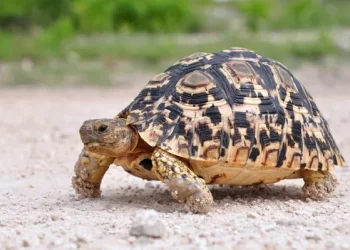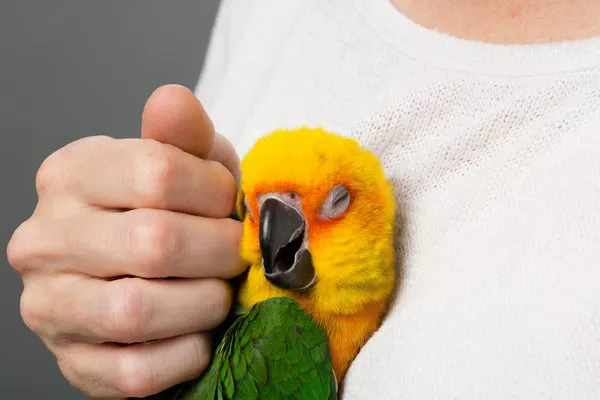The Aldabra tortoise (Aldabrachelys gigantea) is one of the largest tortoise species in the world and is native to the Aldabra Atoll in the Seychelles. Known for their impressive size, longevity, and remarkable adaptability, Aldabra tortoises are a focal point of interest for researchers and conservationists. One intriguing aspect of these tortoises is their behavior and physiology concerning water. A common question that arises among enthusiasts and researchers alike is whether Aldabra tortoises can breathe underwater. This article delves into the anatomy and physiology of Aldabra tortoises, their aquatic behaviors, and provides a comprehensive answer to this question.
Anatomy and Physiology of Aldabra Tortoises
Respiratory System Overview
The respiratory system of Aldabra tortoises, like other tortoises, is adapted to their terrestrial lifestyle. They possess lungs similar to other reptiles, which are adapted for breathing air. Tortoises have a relatively simple respiratory system compared to mammals. Their lungs are not as complex and do not have the same degree of compartmentalization found in mammalian lungs. This simplicity limits their ability to hold their breath for extended periods and their capacity to survive underwater.
The respiratory system includes:
Nostrils and Nasal Passages: These are used to inhale air. The nasal passages filter, warm, and moisten the air before it reaches the lungs.
Lungs: The primary organs for gas exchange. Air enters the lungs where oxygen is absorbed into the bloodstream, and carbon dioxide is expelled.
Pharynx and Trachea: The pharynx is a passage that connects the nasal cavity to the trachea, which then leads to the lungs.
Adaptations for Terrestrial Life
Aldabra tortoises have evolved various adaptations for their terrestrial lifestyle. Their respiratory system is suited for breathing air rather than underwater. Unlike aquatic turtles, which have specialized adaptations for underwater breathing or have the ability to extract oxygen from water, Aldabra tortoises lack such adaptations.
Their adaptations include:
Robust Shell: The shell provides protection and supports the respiratory system by helping to create a rigid structure that allows for effective breathing.
Slow Metabolism: They have a slow metabolism, which reduces their overall oxygen requirements and helps them survive in environments where food and water may be scarce.
Behavior and Habitat of Aldabra Tortoises
Natural Habitat
The Aldabra tortoise is native to the Aldabra Atoll, a coral atoll in the Indian Ocean. Their habitat consists of a mix of grasslands, scrublands, and mangrove forests. This environment is typically dry with occasional rainfall. Aldabra tortoises are well-adapted to this habitat, but they are not accustomed to prolonged periods in water.
Interaction with Water
While Aldabra tortoises are primarily terrestrial, they do interact with water sources. They are known to bathe in shallow pools and ponds to hydrate and cool down. During these activities, they may submerge themselves partially but not fully. These interactions are not indicative of their ability to breathe underwater; rather, they are adaptations to their environment for hydration and thermoregulation.
Can Aldabra Tortoises Breathe Underwater?
Breathing Mechanisms
Aldabra tortoises, like all tortoises, are air-breathing reptiles. They lack the physiological adaptations necessary to breathe underwater. Unlike some aquatic or semi-aquatic reptiles that have evolved mechanisms to extract oxygen from water or hold their breath for extended periods, Aldabra tortoises do not possess such adaptations.
Key points about their breathing mechanisms include:
No Gills: Aldabra tortoises do not have gills, which are essential for extracting oxygen from water.
Limited Breath-Holding: They can hold their breath for short periods but not for extended durations. This is consistent with their terrestrial lifestyle, where prolonged underwater activity is not necessary.
Lack of Aquatic Adaptations: Unlike aquatic turtles or sea turtles, which have evolved various adaptations to their underwater lifestyles, Aldabra tortoises lack these specialized features.
Submersion and Breathing
While Aldabra tortoises can submerge themselves briefly, this does not equate to their ability to breathe underwater. They typically hold their breath while submerged and must surface to breathe. Prolonged submersion can be stressful and potentially harmful to their health.
In their natural habitat, Aldabra tortoises may briefly enter the water to drink, bathe, or forage, but they do not remain submerged for long periods. They rely on their ability to surface and breathe air to maintain their respiratory needs.
Comparison with Other Tortoises and Turtles
Aquatic Turtles
Aquatic turtles, such as sea turtles and certain freshwater species, have evolved unique adaptations for breathing underwater or extracting oxygen from water. For instance:
See Also: Are Aldabra Tortoises Aggressive?
Sea Turtles: Some sea turtles can hold their breath for several hours while diving. They have specialized adaptations such as larger lung capacities and more efficient oxygen usage.
Freshwater Turtles: Certain freshwater turtles have evolved mechanisms to extract oxygen from water through specialized areas in their throat or cloaca.
Terrestrial Tortoises
Terrestrial tortoises, including the Aldabra tortoise, are adapted for land life and do not have these aquatic adaptations. They are not equipped to breathe underwater and must surface to access air. Their interactions with water are typically limited to drinking, bathing, or cooling off, not for prolonged submersion.
Implications for Care in Captivity
Habitat Design
In captivity, providing a suitable habitat for Aldabra tortoises involves creating an environment that mimics their natural conditions. While they do not require large bodies of water, a shallow water source for drinking and bathing is essential. This allows them to engage in natural behaviors without exposing them to the risks associated with prolonged submersion.
Health Considerations
It is important for keepers and owners to be aware of the health implications related to water exposure. Excessive or inappropriate water exposure can lead to health issues such as shell rot or respiratory infections. Proper habitat design and monitoring are crucial to maintaining the health and well-being of Aldabra tortoises in captivity.
Conservation Status and Efforts
Threats and Conservation
Aldabra tortoises face various threats in the wild, including habitat loss, climate change, and invasive species. Conservation efforts are in place to protect their habitat and ensure their survival. These efforts include habitat preservation, captive breeding programs, and education about the species.
Role in Ecosystem
Aldabra tortoises play a significant role in their ecosystem. They contribute to seed dispersal and help maintain the balance of their habitat. By understanding their behavior and physiology, researchers and conservationists can better protect these important reptiles.
Conclusion
In conclusion, Aldabra tortoises cannot breathe underwater. Their respiratory system is adapted for a terrestrial lifestyle, and they lack the physiological features necessary for underwater respiration. While they interact with water for hydration and cooling, their behavior does not involve prolonged submersion or underwater breathing.
Understanding the anatomical and behavioral aspects of Aldabra tortoises is crucial for their proper care and conservation. By recognizing their limitations and needs, we can ensure that these magnificent creatures continue to thrive both in the wild and in captivity.
Related Topics:

























